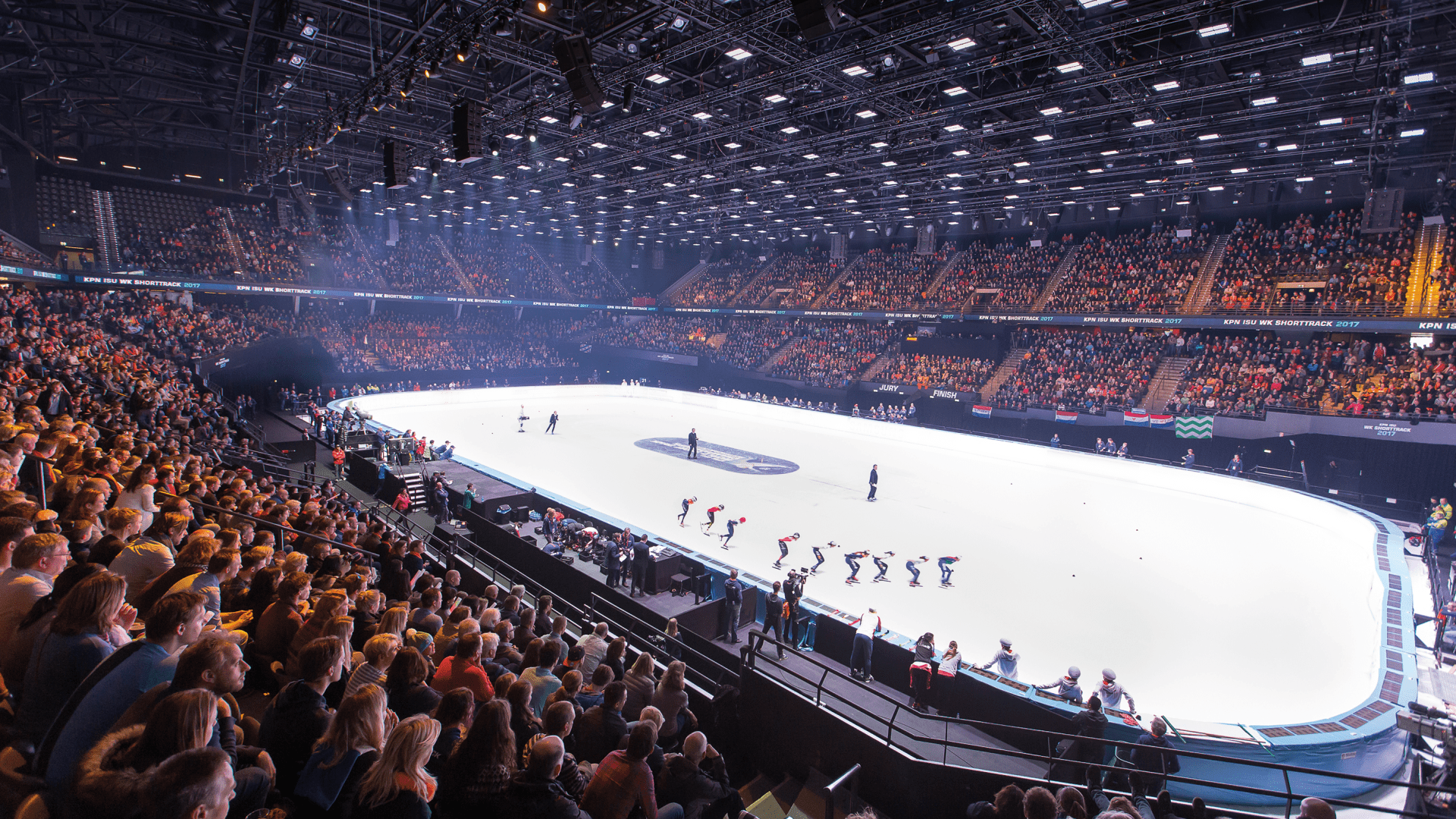
Short Track
Short Track is a very fast sport. It’s a form of riding with a high speed on ice skates. Multiple skaters try to get over the finish as fast as possible at the same time. The skaters who is first at the finish wins. Short Track has a lot to do with technique, condition, tactics, acceleration and agility.
Skaters compete on an oval ice track with a length of 111,112 meters. There are matches at different distances. Several laps have to be skated for each distance.
500 meters: 4,5 rounds.
1000 meters: 9 rounds.
1500 meters: 13,5 rounds.
2000 meters: 18 rounds (mixed relay)
3000 meters: 27 rounds (super finales and relay women)
5000 meters: 45 rounds (relay men)
Skaters perform individual in the 500 meters, 1000 meters, 1500 meters, 3000 meters and four-person race, in the 3000 meters relay for women, and the 5000 meters relay for men.
There are qualification rounds, quarterfinals, semi-finales and finales per distance. The qualification rounds, quarterfinals and semi-finales are divided into different heats. Which skater rides in which heat is selected by lottery. In each heat performs four to eight skaters.
In the relay performs multiple teams per heat. A team consist of three or four skaters. The skaters alternate after 1,5 to 2 rounds. Usually, the outgoing skater pushes the incoming skater to help the teammate to gain speed. If there are still three laps to go, you will hear a shot sound. There may only be one more change. The team will be disqualified if there is a no visible change or a change in the last two rounds of the match.
Jury & Rules
There is one main referee with two assistant referees and a video referee or four assistant referees. After each race, the main referee assesses the race by means of a video-replay system. The main referee can use the system to judge the actions during the race. When a skater consciously obstructs or blocks another skater, that skater can be punished with a penalty. This skater will be disqualified. A skater in a promising position, who is obstruct or blocks by another skater, can proceed to the next round through an advancement.
Per heat is one false start allowed. At every false start after the first one, the skater will get a penalty and will be disqualified. If there is a crash in the first turn, the referee can decide to restart the race. The referee can also stop the race at any time. This can happen, for example, if someone falls and stays in a dangerous place. The race can also be restarted.
When a skater falls, the person may get up again and continue the race, but at the outside of the track, so as not to bother other skaters.
History of short track
To make skating attractive to a wider audience, an accessible form of long track speed skating was developed; short track. This made organising the sport easier, as it is a smaller rink, but it also made it easy for spectators to follow the sport.
The sport only started to spread internationally in the 1970s, as the first official shorttrack championships were in 1978 and took place is Solihull, UK. Since then, the popularity of the sport has started to grow. Since 1992, for instance, the sport has become a regular part of the Olympic skating programme.
Still, shorttrack is growing nationally and internationally, with more and more different countries and participants competing to cross the finish line first. The challenge through the turns and strategy makes the sport spectacular.

